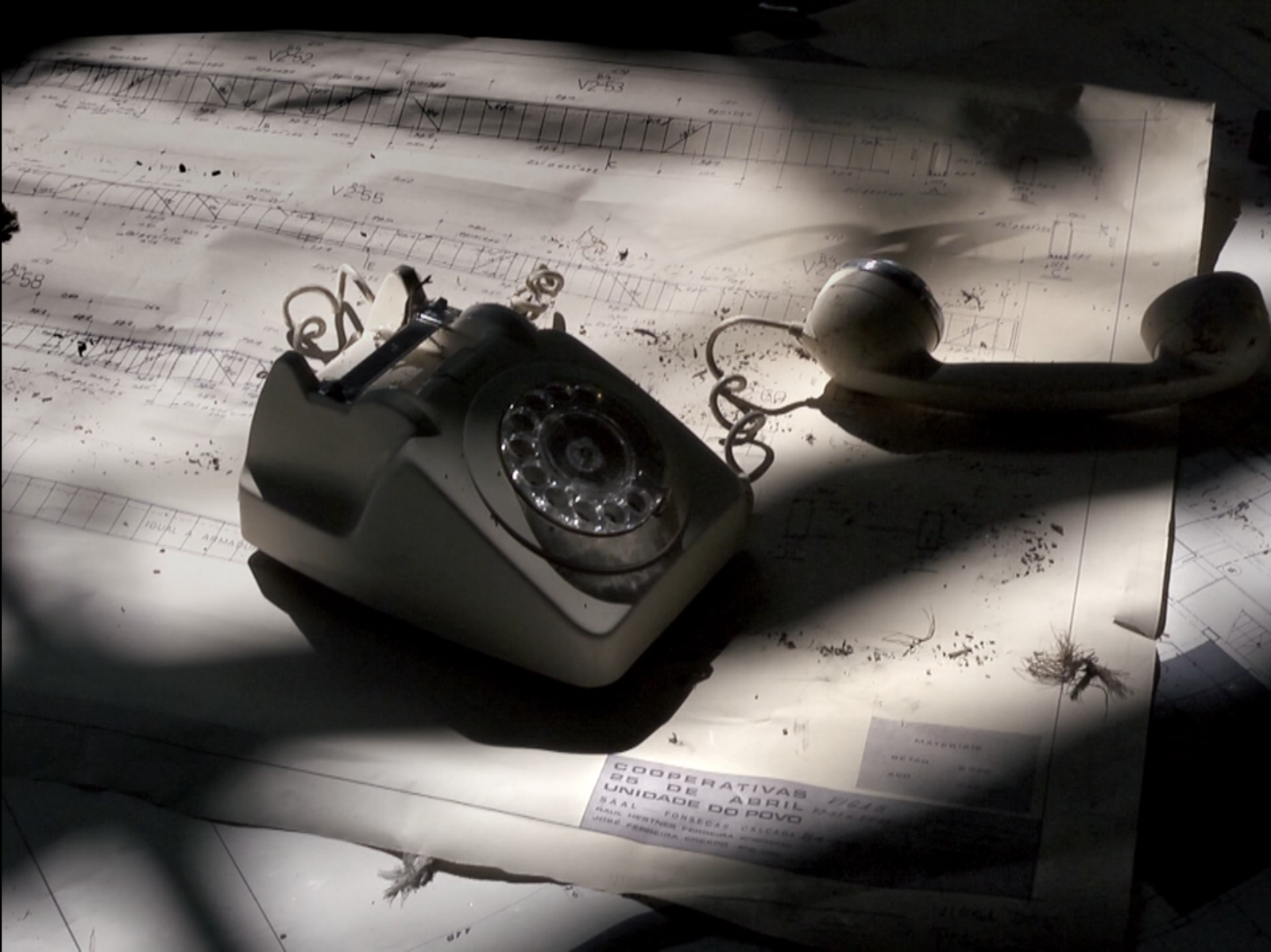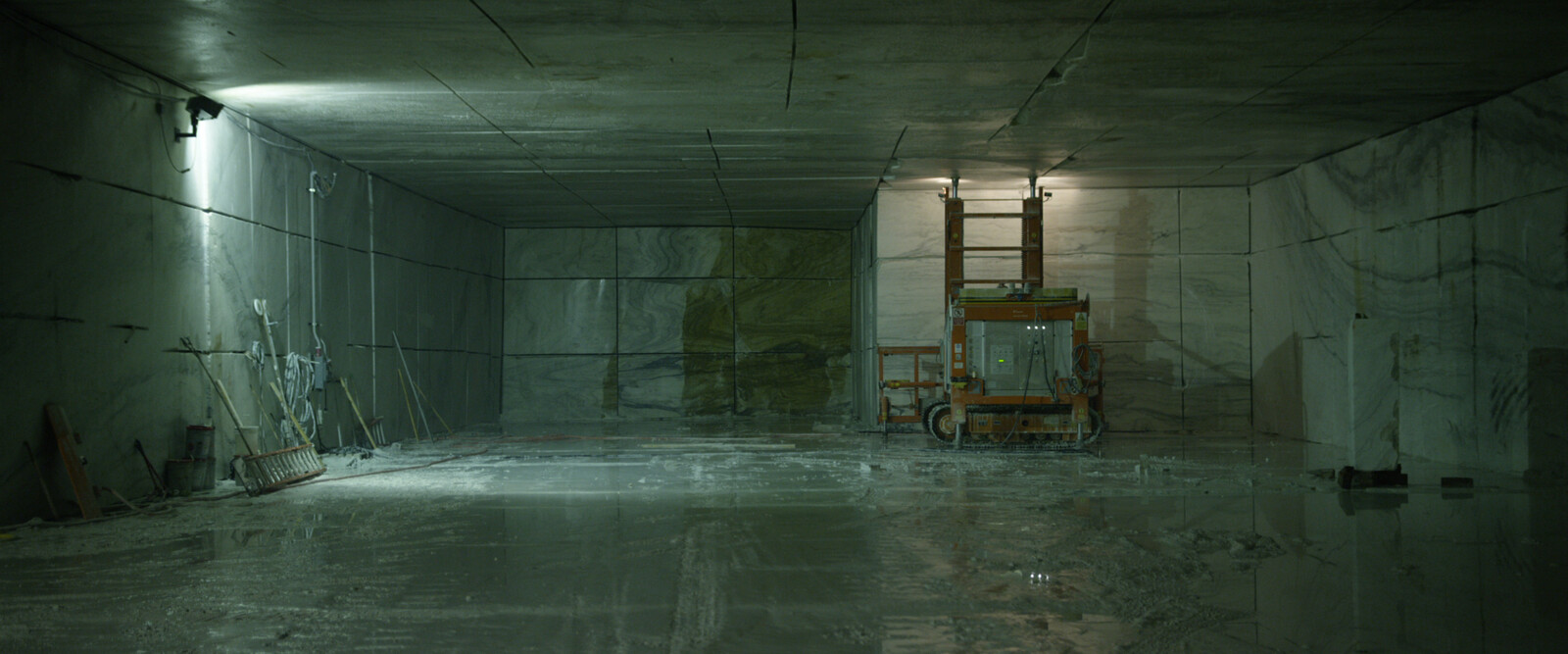I want to tell you a story I recently heard about a friend in New York—actually a friend of a friend, a young architect and entrepreneur named Peter Green Peter Chang. I have never met Peter Green Peter Chang myself, nor has anyone ever explained to me why his full name contains two Peters. But his story is somehow familiar, even if nothing like it has ever happened to me. Perhaps because it could happen to me or to anyone else in the near future.
In New York Peter Green Peter Chang had become moderately well-known in the architecture community for his work with a number of property developers. These were property developers who acquired real estate from the elderly or from poor members of neighborhoods just starting to be accessed by creative young people seeking cheaper rents. Anticipating broad demographic changes on the horizon, the developers would obtain swaths of overripe or derelict homes and storefronts and convert them into grand cathedrals for creative living and entrepreneurial projects.
Over the years Peter Green Peter Chang grew to be the main architect in charge of aesthetic upgrades for these neighborhoods. His peculiar name must have had the right ring to developers. Green is good for an architect, Chang is inexpensive, and Peter is honest. So Peter Green Peter Chang had a steady stream of work. But in fact he had no competitors. His fees were at least half of the next lowest bid on any project. At the end of every project, there were no surprise costs. And he always delivered on time. No client dared ask him how he did it. Probably for fear of what they might find.


Being Chinese, Peter Green Peter Chang had a strong sense of civic duty. When the process of removing old residents felt cruel or premature, as it often did, he would remind himself: this is New York and this is America—he did not enter into this line of work easily. His parents did not have an easy landing when they came to the US, nor did his grandparents when they moved to Taiwan. Violence is just a part of life, and all people must deal with change. He had to, his parents had to, their parents had to, and most certainly their parents in China had to deal with change as well. If he had inherited both strength and bitterness from his family’s experiences of migration and survival, he was now putting it to use in his position at the very forefront of structural changes taking place in the city where he lived.
In contrast to many of his architect colleagues, Peter Green Peter Chang never saw himself in a position superior to the residents of the neighborhoods where his buildings were built. He resented how both the developers and his architect colleagues encouraged him to inject local flavors and celebrate historic characteristics even as they redeveloped entire communities. Peter Green Peter Chang could not celebrate the poverty of the neighborhoods where he worked any more than he could imagine their residents doing so. For him the pious absolutism of long white walls and modernist slabs, or any new construction for that matter, were great beacons shining away from backwardness, leading out of decrepitude and ancient stupidity. He secretly pined for a world that would remove all the putrid flavors of peasant tradition from the equation. In this he often stood together with the residents who could afford to remain in their homes after his projects were complete: the bourgeois black, Hispanic, and Asian communities who applauded his work knowing that their own properties would double and triple in value. They could finally cash out and retire in the southern US, in Asia, South America, the Caribbean, or wherever their hearts desired.
But Peter Green Peter Chang had a secret. In fact, he never received any training as an architect, though he was licensed and had officially completed many buildings. Some suspected that the strangeness of his name originated in badly forged diplomas or architect licenses. In actuality he had received very little formal education whatsoever, and instead dedicated his youth to the informal study of experimental physics. In doing so, Peter Green Peter Chang came upon a strange synthetic building material he believed would revolutionize the construction industry and built space in general.
He nicknamed it “Bubble Rubble” for paradoxically combining the weightless properties of bubbles with the fragmented material properties of decayed or derelict infrastructure. The trick came in moving energetic matter through time in a way similar to a financial trader, although we can never be certain, as the research remains undocumented and the technology mostly hearsay. According to the rumors, this Bubble Rubble borrowed from both the economic aspirations of historical communities of the land on which he built and the material decay of existing structures at his disposal. This combination, as the story goes, makes possible a kind of hypermaterial that resolves apparently conflicting temporal axes into a single plastic substance—concretizing both the desires and disappointments at either end of a building’s lifespan and cloaking them within the retro-modern vernaculars favored by gentrifying building developers. What appeared to be mostly baked together out of prefab floorplans and made-to-order ventilation systems were in fact buildings whose very existence was spectral to the point of being holographic, while at the same time absolutely materially present. And in this sense, Peter Green Peter Chang’s particular brand of generic architecture was actually a stealthy way of hiding his brilliant discovery in broad daylight. There were some who could sense this, and would claim that his buildings never in fact existed, that he was a fraudulent architect, but Peter Green Peter Chang always reminded his clients that his unusually low costs made his competitors deeply resentful.
In actuality, the great innovation of Peter Green Peter Chang’s Bubble Rubble came in a fundamental assumption about his milieu. Peter Green Peter Chang believed that, while many around him claimed to work to redistribute energy and spread democracy, few sincerely wanted either of these things at all. Like the older bourgeois residents of the neighborhoods his projects targeted, most people simply wanted to relax with a jar of rice wine on a little platform over the riverbanks of their parents and ancestors. Peter Green Peter Chang could feel the future getting crowded by the things his own ancestors stole or thought they could stash away, and the accumulation began to weigh on him. It made him move more slowly, think less clearly, eat more, spend less, dress less exquisitely, seek more time with close friends and family, and so forth. Peter Green Peter Chang did not feel sad or depressed from this weight. He simply felt slower, more burdened. Others might have felt a similar burden as guilt, but the architect Peter Green Peter Chang sensed time accumulating and becoming contradictory or indecipherable, confusing and undermining decisions that were once simple and straightforward. He began to believe buying an expensive sports car to be a manner of paying rent. He began to feel the need to slow down becoming a question of which city to move to next year; a city where he might reclaim a long lost treasure. That’s why Peter Green Peter Chang’s ears perked up when his developer clients approached him with a new kind of proposal. They had begun researching prospects in China and wanted him to spearhead a project there.
A responsible Asian-American man like Peter Green Peter Chang is always careful never to vocalize his feelings regarding race and ethnicity even among close friends. He shared a telepathic bond with other Asian friends who similarly knew better, but their contract had to remain unspoken. None of them dared broach the subject of shared ethnicity for fear of discovering that they in fact had little in common, and were simply drawn together to collectively dispel the brute fact of sharing nothing but vague ethnic characteristics. For Peter Green Peter Chang, the unspoken nature of the agreement was made more necessary by the fact that he privately felt superior as an immigrant, strengthened and nourished as he was by the difficulties his family had experienced in the past. On the contrary, his Asian-American friends felt weighed down by their history, by being unable to synchronize the injustice of their lowly minority status with the story of what brought them to a place that could never be their own. So the appearance of China on Peter Green Peter Chang’s forecast came as a natural and timely development. Though he knew nothing about the country, he was proud to be approached as an automatic expert by virtue of his ethnicity. Surely his innovative building material would gain an entirely new life in China’s booming economy.


In China, Peter Green Peter Chang proposed to start work in the ancestral hometown of his family, a village whose name he could neither remember nor pronounce. But it felt like the right place to begin. He assured his trusting developer clients that this town was full of empty buildings new and old, and that he had met many young creatives with the energy and initiative to fill them. One building in particular caught his attention: a massive private mansion from the early twentieth century that had been used as a workshop for local artisans in the late twentieth century before being abandoned in the 1990s. Though it was crumbling from neglect, Peter Green Peter Chang could envision its many floors brimming with overlapping groups of industrious young people. One floor could be a collaborative kitchen where aspiring amateur chefs or foodies could bring ingredients to cook imaginary Tang dynasty dishes. Another could be a coworking space full of well-composed adults of all ages biting lower lips studying glowing screens, composing science fiction stories sublimating memories of the Cultural Revolution. Another, a workshop using scrap metal from the nearby car repair shop to build elegant bicycles. Another, a contemporary art center where visitors could bathe in immersive video installations while enjoying local cuisine from its food court. Another, a small press printing new philosophy and critical theory on parchment made of pine tree needles from the nearby forest.
What a relief China was, rich with so many new possibilities. Peter Green Peter Chang started to realize how cynical he had grown in New York and in the US, where he had worked for years knowing full well that the future could never be written from a part of the world whose culture was based in extraction and plunder. The Western world has been in a state of decay for longer than it has known. The young creatives moving into his New York buildings were only holograms, projections responsible for beautifying a long-lost industrial sector with fake vital energy and sassy t-shirts. Perhaps they themselves already know that they can only look for serene spaces to die a peaceful death with cool friends and nice furniture.
The sense of new life and renewal that surrounded Peter Green Peter Chang in China only reinforced his thinking that the difficulties experienced by earlier generations of his family made him smarter and stronger. He began to assemble a story in which this intelligence and strength had been building over generations in exile, incubating in the safety of a foreign empire, only to eventually build a bridge home over the oceans and through the atmosphere when that foreign empire’s power began to wane. Peter Green Peter Chang now realized that for some time his destiny had been to eventually return, repair and pilot the downed spaceship of his grandparents’ culture. He would return home and enter its rotten cockpit to feel the great machine envelop and surround him like a womb.
Peter Green Peter Chang’s mother would tell him over the years: just go to Vancouver. Your aunt and uncle there. Plenty Chinese people there. But he didn’t care about Chinese people. That was not an end in itself. He wanted to build something, make new discoveries. He wanted to build his own culture out of his own culture. He craved glass towers and ruins, next to each other, replacing one another, growing into one another, becoming indiscernible, conflating time and space, death and life. The dark power of Bubble Rubble was such that Peter Green Peter Chang could never be sure when one would overtake the other and undermine the projection. Amidst his feverish excitement, his emails began to contain a specific typo: trying to address friends, family, and co-workers with “Dear” he found himself repeatedly mistyping “Dead.” Dead Howie, Dead Francis, Dead Lisa, Dead Michael, Dead Dad, Dead Mom. Dead Friends, China is awesome, come visit me soon!
However, in the ancestral hometown whose name he could neither remember nor pronounce, Peter Green Peter Chang faced a major problem. For many abandoned properties such as the one he had set his eye on, it had become difficult to locate a deed of ownership. Many official records had been lost due to to changes in government or migrations of people over the course of the twentieth century’s various political upheavals, and without any documentation identifying a property’s owner, it was impossible to determine who held the right to sell it. Apparently, this abandoned house was one such property frozen in an ambiguous legal limbo, waiting to be claimed by an original owner or their descendants who may or may not even exist.
Finally, Peter Green Peter Chang was able to meet with a mid-level official named Mr. Guang to inquire about what could be done. Mr. Guang was barely older than Peter Green Peter Chang, more fit, and with a twinkle in his eye. He introduced himself with a charismatic smile and speaking excellent English. In a run-down old bureaucratic office looking just as overgrown with papers as the abandoned property was covered in weeds and vines, the exuberant Mr. Guang appeared to have come straight out of another world, the business world. With a brief rush of superiority, Peter Green Peter Chang thought to himself that this official must be a failed entrepreneur—not everyone can be a winner in the game. The enormous Chinese state bureaucracy must function as a final resting place for those who can’t rise to the occasion of the country’s great economic experiment.
Mr. Guang, on the other hand, could see that Peter Green Peter Chang was a Western entrepreneur eager to invest significant resources in a part of the world he had little knowledge of. This struck Mr. Guang as ironic, considering that there were many people in the town named Chang who even shared distinctive facial features with Peter Green Peter Chang. Mr. Guang explained that it was unfortunate that there was little he could do to facilitate the sale of the property without any documents indicating ownership. Desperate to secure the deal, Peter Green Peter Chang pulled Mr. Guang aside to express that he was willing to pay whatever was necessary to whomever was necessary to acquire the property. Mr. Guang smirked: “But sir, there are many buildings here for you to use. The government has built cultural centers. Museums. Residential estates. Many by prestigious Western architects. Surely it would be more expedient to acquire a property that can be legally sold to you.”
Two weeks later, Peter Green Peter Chang was in possession of a deed of ownership for the building he so wanted. He was unable to convince his developer clients to invest in a property acquired outside the proper channels, so he undertook the project as a private investment for its personal significance. Every cent he owned had now left his bank account, yet he considered it a small price to pay for a property most certainly capable of growing in value in the coming decades. He had now gained a foothold in China, and it was the beginning of a new era for him. Peter Green Peter Chang wrote home breathlessly, listing many projects he hoped to pursue in the building, but his friends and family could hardly follow what he wrote. This building appeared to have seized onto deeply contradictory personal longings to be in a certain place at a certain time in a way that the intricate social and spatiotemporal engineering of Bubble Rubble could not account for.
Two months later, Peter Green Peter Chang was overseeing renovations on the new property when Mr. Guang paid him a visit. Appearing fit as ever, with a peculiar—even satisfied—glow, Mr. Guang pulled Peter Green Peter Chang aside: “Peter Green, I wanted to share some news with you. Of course this news has no consequence with regard to the ownership status of your home, as it has been purchased by you from the local government. But we were able to locate a deed of ownership for the property dating to 1915. I believe you will find it to be of interest.” Mr. Guang presented a ragged, yellowing, barely legible sheet of paper to Peter Green Peter Chang. On this original deed of ownership, the names of his grandparents were unmistakable.
Superhumanity is a project by e-flux Architecture at the 3rd Istanbul Design Biennial, produced in cooperation with the Istanbul Design Biennial, the National Museum of Modern and Contemporary Art, Korea, the Govett-Brewster Art Gallery, New Zealand, and the Ernst Schering Foundation.
Category
Subject
Superhumanity, a project by e-flux Architecture at the 3rd Istanbul Design Biennial, is produced in cooperation with the Istanbul Design Biennial, the National Museum of Modern and Contemporary Art, Korea, the Govett-Brewster Art Gallery, New Zealand, and the Ernst Schering Foundation.





























































